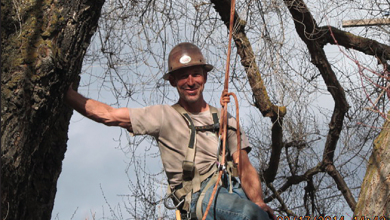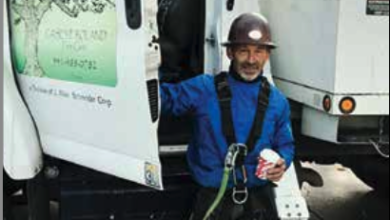Healthy Trees
I’m often asked whether this tree or that tree is “healthy”. It is a tricky call really, as the term means more than just a display of vigor. Healthy trees fall over all the time, and there are many trees in decline that have hung in there, defying gravity for decades!
A lush, full, green canopy would lead one to believe that the tree is healthy, right?
Not so fast! If the base of the lush, full, green tree is ringed with fungal decay, all bets are off. Health, or a measure of health, should include the basic structural points of limb attachments, as well as the anchorage of the root system to the encompassing soils within the root zone.
What measures do arborists take to ensure good “health” then? First is familiarity with the type of tree we are dealing with. If I were to be called to the Central American rainforest/jungle to assess a tree, I would have to respectfully decline, as I have zero experience with that area. Not that I couldn’t apply the basics of arboricultural knowledge to the examination, but it would be like asking a mechanic that specializes in Suburu’s to overhaul your Porsche 935, if he or she had never laid eyes on the internals of a 935.
That said, there are hundreds of types of non-native trees in the valley, heck, when you really start looking around town, there are hardly any native trees used in commercial and residential landscapes at all.
Modesto ash trees look like hell every year at this time due to Anthracnose but when the weather warms and dries, they make another new batch of leaves and all is well, until next spring that is, and the temporary defoliation has its early spring go at things. Are the Modesto ashes healthy? Yep, believe it or not, they are. To make a mature tree healthy, rarely if ever, includes pruning! I’ll say it again; pruning does not provide “health” to a tree. There are a few valid reasons to prune, for structural enhancement like reducing weight on limbs that have outgrown their normal form, or eliminating funky branch attachments, pruning infected parts can benefit “health” per se, but whatever infected the tree in the first place will, in my experience, keep on keepin’ on. Trees have been strumming along just fine for thousands of years that have never seen a saw! Most structural pruning should take place early on in a trees life and end up with removal of hazardous dead branches as needed. Some trees are just inherently limb-barfers by nature and in that case, extra care is warranted.
The reason for keeping big cuts off stems and limbs is simple. Trees are “closed systems” and big, open pruning injuries should be avoided whenever possible. Decay absolutely LOVES big pruning cuts; it is its pathway to a fruitful (literally) life!
Dead branches on certain trees may have to be shortened for some time to help the arborist to determine exactly where the tree sets up its defenses to best resist the decay that is coming down the road in the future.
There is no “magic pill” for trees to ensure health, if there was, I’d be selling ’em by the truckload. Reasonably priced, of course…
The best measures anyone can provide to enhance a trees health, is let it do its thing and make the environment suit the individual. Keep soil and organic material off and away from the stem and root collar. Water AWAY from the stem and root collar. Mulch the entire root zone if possible/practical, again, keeping it off the stem and root collar. Do you see the pattern here?
Prune to remove dead branches as needed, but don’t go overboard trying to get every dead twig unless it is a small tree or a formal setting, or you just won the lottery…
Moisture is good, drainage is even better, and catching drought stress before it happens is best. Soggy wet or bone dry is the worst! If you properly mulch, you will probably never need to fertilize, and if you do, make sure you know what you are fertilizing with, and more importantly, why.
Maintaining a Porsche 935 is a lot easier and cheaper than overhauling, or worse yet, replacing one…



